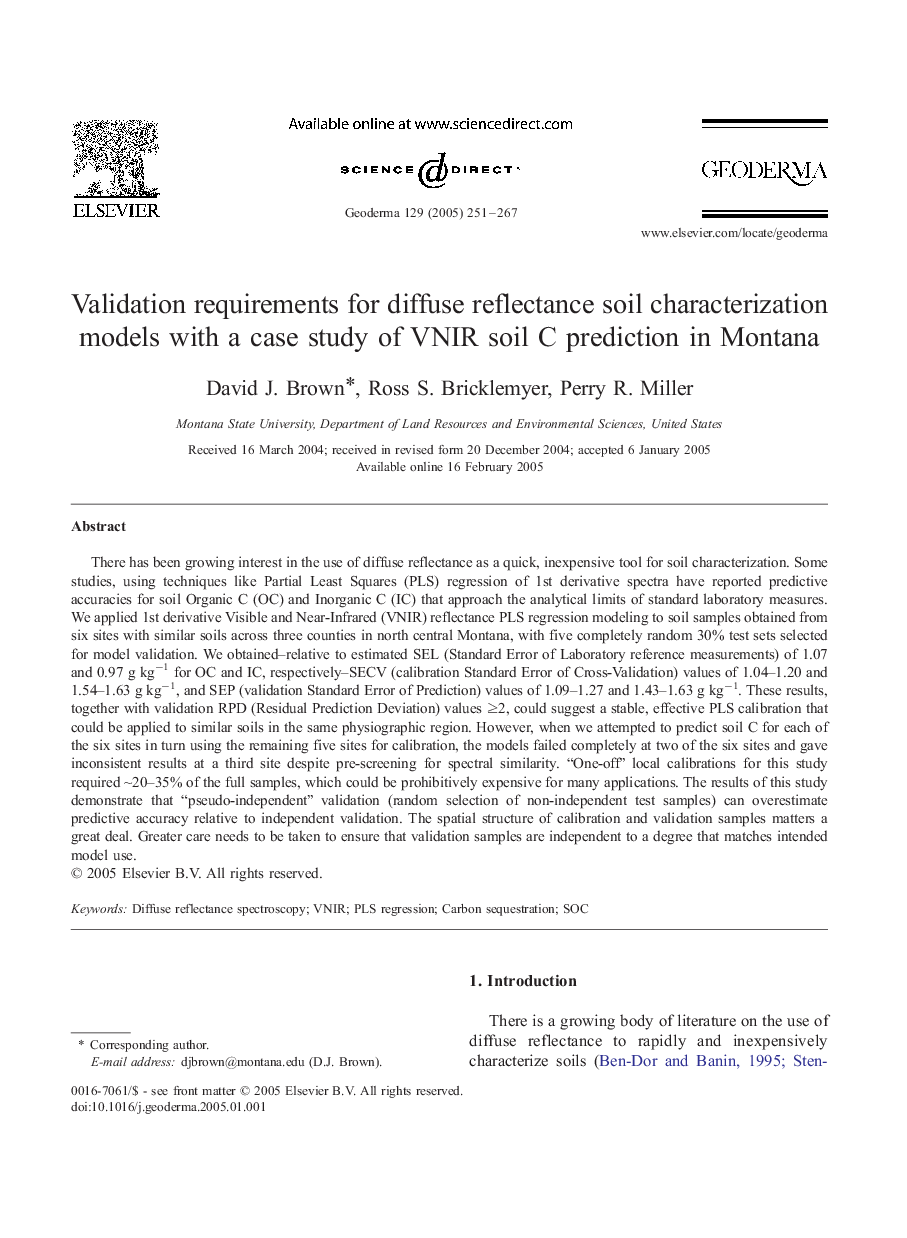| Article ID | Journal | Published Year | Pages | File Type |
|---|---|---|---|---|
| 9490401 | Geoderma | 2005 | 17 Pages |
Abstract
There has been growing interest in the use of diffuse reflectance as a quick, inexpensive tool for soil characterization. Some studies, using techniques like Partial Least Squares (PLS) regression of 1st derivative spectra have reported predictive accuracies for soil Organic C (OC) and Inorganic C (IC) that approach the analytical limits of standard laboratory measures. We applied 1st derivative Visible and Near-Infrared (VNIR) reflectance PLS regression modeling to soil samples obtained from six sites with similar soils across three counties in north central Montana, with five completely random 30% test sets selected for model validation. We obtained-relative to estimated SEL (Standard Error of Laboratory reference measurements) of 1.07 and 0.97 g kgâ1 for OC and IC, respectively-SECV (calibration Standard Error of Cross-Validation) values of 1.04-1.20 and 1.54-1.63 g kgâ1, and SEP (validation Standard Error of Prediction) values of 1.09-1.27 and 1.43-1.63 g kgâ1. These results, together with validation RPD (Residual Prediction Deviation) values â¥2, could suggest a stable, effective PLS calibration that could be applied to similar soils in the same physiographic region. However, when we attempted to predict soil C for each of the six sites in turn using the remaining five sites for calibration, the models failed completely at two of the six sites and gave inconsistent results at a third site despite pre-screening for spectral similarity. “One-off” local calibrations for this study required â¼20-35% of the full samples, which could be prohibitively expensive for many applications. The results of this study demonstrate that “pseudo-independent” validation (random selection of non-independent test samples) can overestimate predictive accuracy relative to independent validation. The spatial structure of calibration and validation samples matters a great deal. Greater care needs to be taken to ensure that validation samples are independent to a degree that matches intended model use.
Related Topics
Physical Sciences and Engineering
Earth and Planetary Sciences
Earth-Surface Processes
Authors
David J. Brown, Ross S. Bricklemyer, Perry R. Miller,
